While The Iron’s Hot combines puzzle-based adventure and crafting mechanics to tell the story of a young blacksmith who aspires to become a master at his craft in a world filled with fantasy and intrigue. It begins with the Blacksmith arriving on an island called Ellian. This land is abundant with rare and valuable resources, so much so that its culture has developed around the artisans who live and work there, dividing themselves into enclaves where each can focus entirely on their chosen trade. Luckily for the protagonist, he finds the blacksmith artisan’s village of Stal mysteriously abandoned save for a single one-armed man squatting in its ruins. The Blacksmith’s wishes are more than fulfilled; as the only man of his trade in Ellian, his skills are in high demand. By completing jobs for the other artisans, he can improve his repertoire, rebuild Stal, and become the master blacksmith he always dreamed he could be. But the more his renown grows, the more the mystery gnaws: Where did Ellian’s previous blacksmiths go, and why did they disappear?
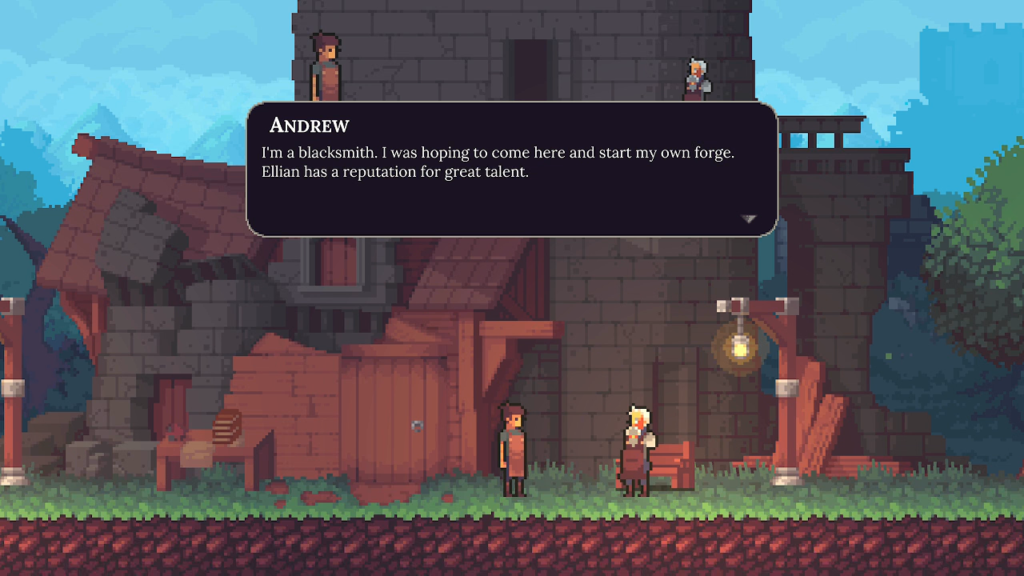
The primary activity in While The Iron’s Hot is forging objects out of metal and glass. Whether it happens in Stal or with the portable forge the Blacksmith can set up in an instant anywhere on the world map, he crafts an endless train of objects which improve his ability to travel around Ellian and interact with its inhabitants.
Everything the Blacksmith creates begins as raw material. Once this ore is melted in a forge and formed into bars, they can be hammered into six different shapes on an anvil. These shapes can then be assembled at a craftstable on a three-by-three grid like pieces in a puzzle. Different configurations of the hammered shapes, sometimes intermingled with other items the Blacksmith discovers around Ellian or obtains from his counterpart artisans, creates different types of objects.
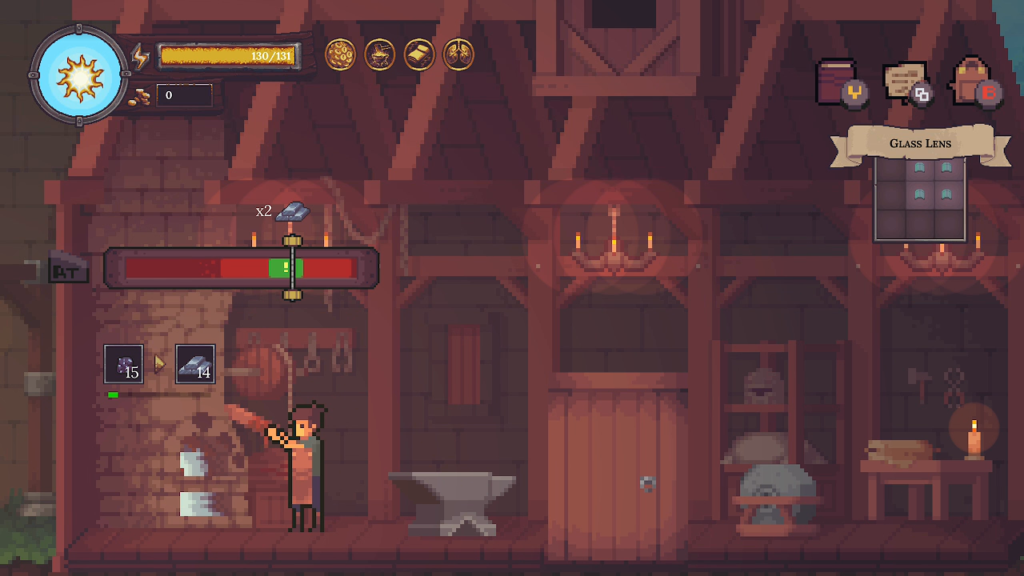
Raw materials placed in the forge will smelt themselves into bars automatically while the Blacksmith focuses on other tasks. He can also manually heat the forge by playing a timing minigame using a bar and a sliding marker; if I can stop the marker in the green section of the bar, then the material is smelted faster and produces twice the bars than if it were left idle.
Hammering bars into shapes at the anvil also involves a precise timing minigame. The Blacksmith automatically slides his hammer back and forth over a piece of flattened metal on the anvil’s surface whose final form is marked by a green outline. I must press the right trigger when the hammer hovers over sections of the metal outside the green outline. Successfully hammering away all the extra metal results in a completed piece. The higher-quality material the Blacksmith works with, the faster and more precise timing needed to succeed at these minigames.
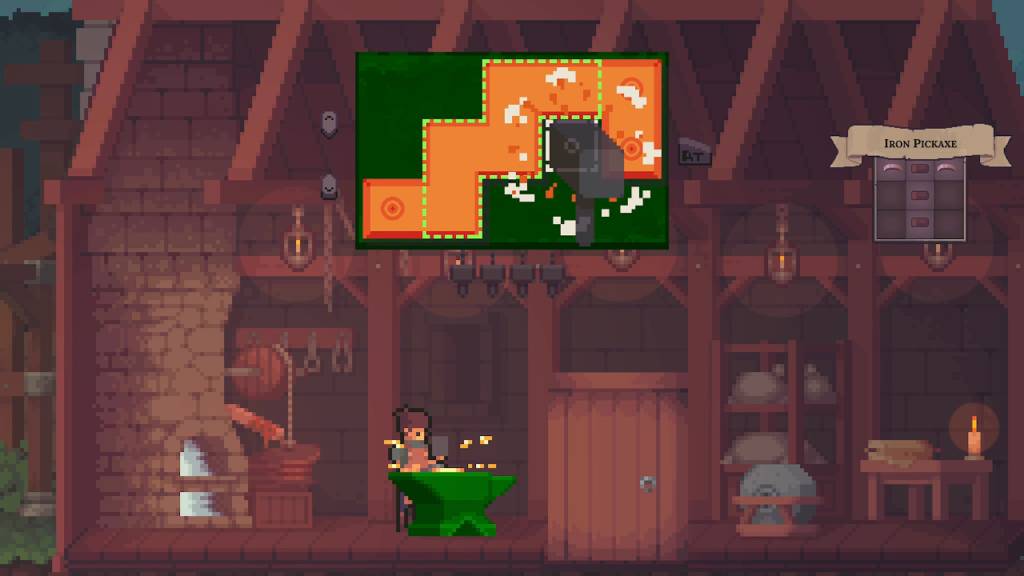
To help me remember which parts are needed and how they should be configured to craft an item, the Blacksmith carries a book full of diagrams. The book’s size swells as he completes quests and discovers diagrams hidden throughout the world.
Up to three diagrams can be pinned to the screen at a time. This system works well at the start when items are simple, but as the Blacksmith grows in esteem and reaches the furthest shores of Ellian, he is often tasked with creating complicated machines that require smithing more than three components. Shuffling through dozens of diagrams, remembering which parts are sorted under which categories, and pinning and unpinning them from the interface becomes ponderous. The process doesn’t make the Blacksmith feel like a master imbued with almost magical aptitude. It makes him feel like a forgetful fool who would be helpless without his cheatbook.
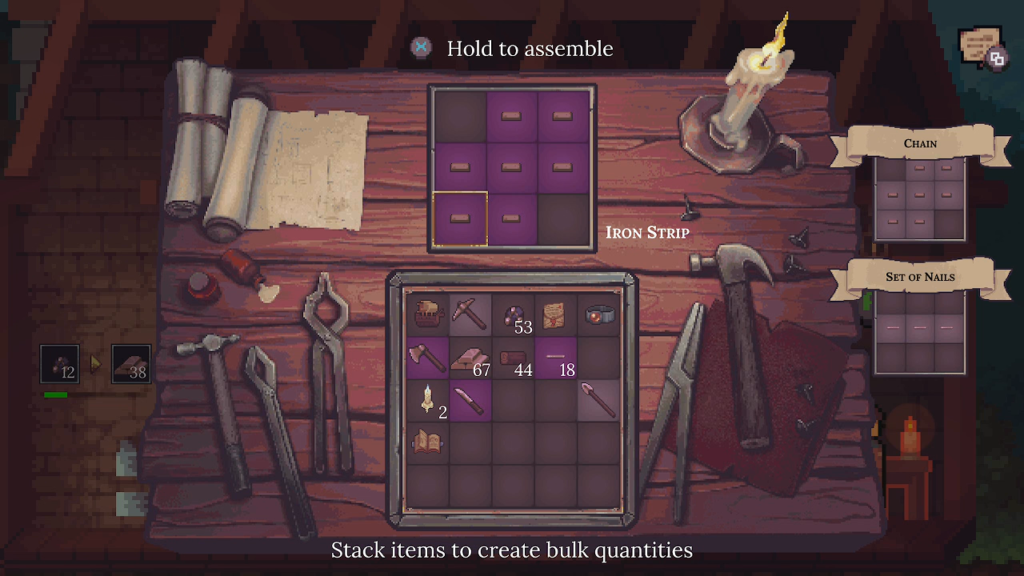
It doesn’t take long for the crafting process to feel repetitive. Since every object in the game is constructed using the same six core parts, the Blacksmith spends a lot of time making those same six parts over and over. Compounding this problem is smelting the bars those parts are made from. Since playing the smelting minigame results in more bars to use in future crafts, I feel compelled to play it to squeeze all the resources from it I can, sometimes for five to ten minutes at a time. The resulting bars will be gone within an hour. The majority of my time in While The Iron’s Hot is remembered as smelting bars and hammering them into parts, over and over, for hours on end with little variety or break in the monotony.
This feeling is exacerbated by how many different kinds of ore there are. The Blacksmith ascends through multiple tiers of metal during his quest across Ellian. They begin with simple Iron ore, which is mined inside caves and from large rocks on the world map. A step up from that is Steel, which is gathered in the same way—which is not how Steel is alloyed, but nevermind.
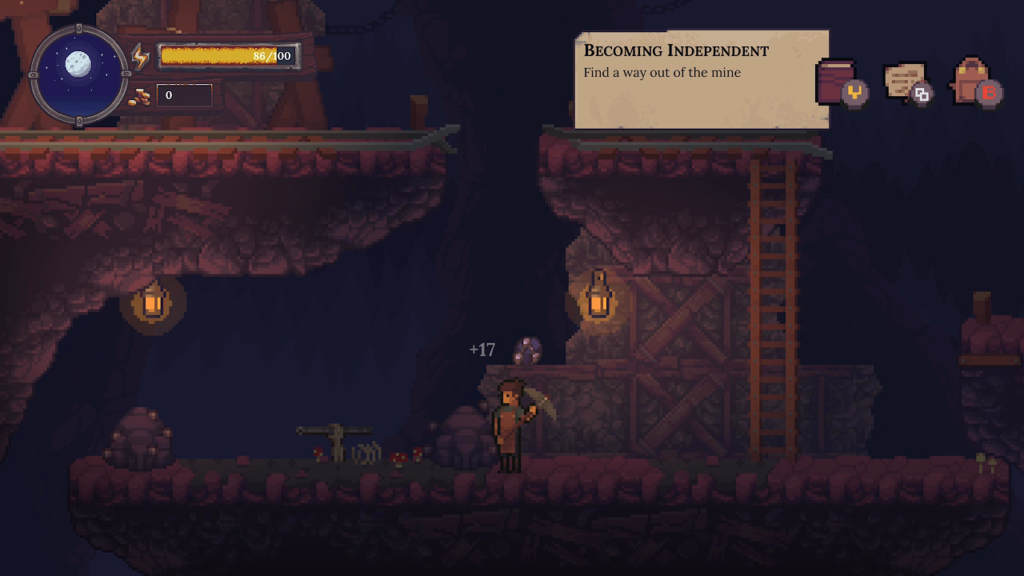
It is the two tiers beyond these where While The Iron’s Hot tests my patience. Damascus Steel and Glass are both smelted from items which must be created using parts created from Iron and Steel parts. To create Damascus Steel, bars of lesser metal must be smelted, then hammered into parts, then converted into Damascus Billets, which can then be smelted again into Damascus Steel Bars. Glass Bars are created through a similar process. Completing quests in the latter half of Ellian, most of which use Damascus Steel and Glass, requires smelting and hammering literally hundreds of standard Iron and Steel bars. It’s a laborious process.
Some amount of moderation would do a lot to alleviate the time and effort it takes to complete these advanced projects, but no such moderation exists. The only concession to my time is dozens of parts can be hammered from a single minigame at the anvil. Everything else must be completed one piece at a time. It’s another case where the Blacksmith doesn’t feel like the master of their craft the story wishes to portray. They feel amateurish, forced to spend an inordinate amount of time with mind-numbing busywork that an apprentice would normally be charged with. Since the Blacksmith is alone in his occupation on Ellian, he is forced to do all the grunt work himself.
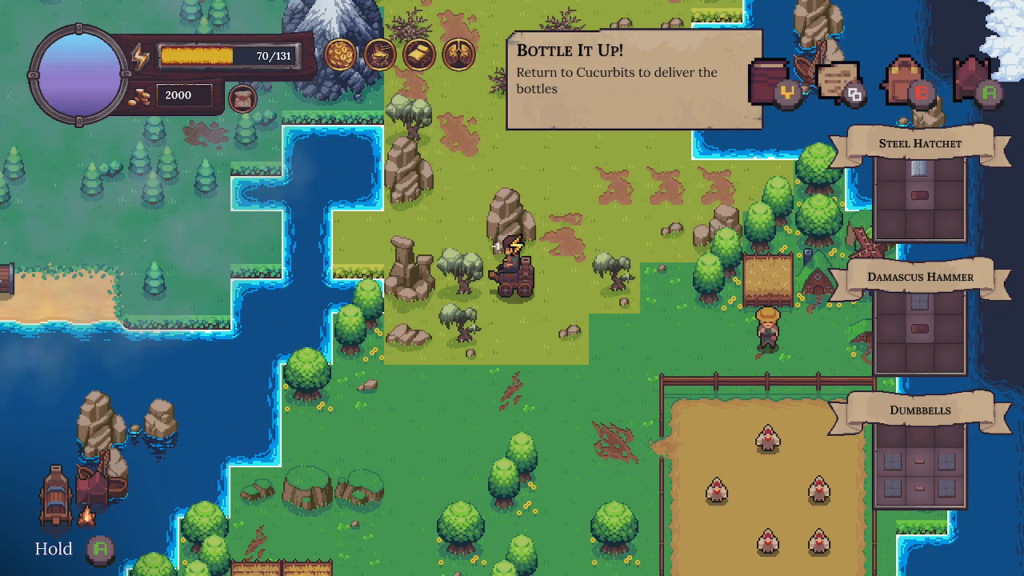
When The Blacksmith is not creating things in Stal or at his portable forge, then he is exploring Ellian, meeting non-player characters, and solving puzzles to complete quests. Most quests are straightforward: A character needs an item, they give the Blacksmith a diagram for it, and the Blacksmith returns after crafting it for a reward. These are the sorts of quests that drive the core narrative.
More interesting are the quests the Blacksmith discovers just off the main path. In one clearing he discovers a pile of broken musical instruments clustered around a campfire. Restringing the instruments and replacing their missing screws and bolts causes them to come to life and play a happy tune, rewarding the Blacksmith with a new piece of clothing for the ox that pulls his cart. There’s a similar quest in a nearby tower. At first it appears empty, but wandering around its insides and using visual clues to move items to where they belong reveals a friendly ghost who haunts the building. Helping the ghost restore order to their home also gives the Blacksmith a cosmetic reward.
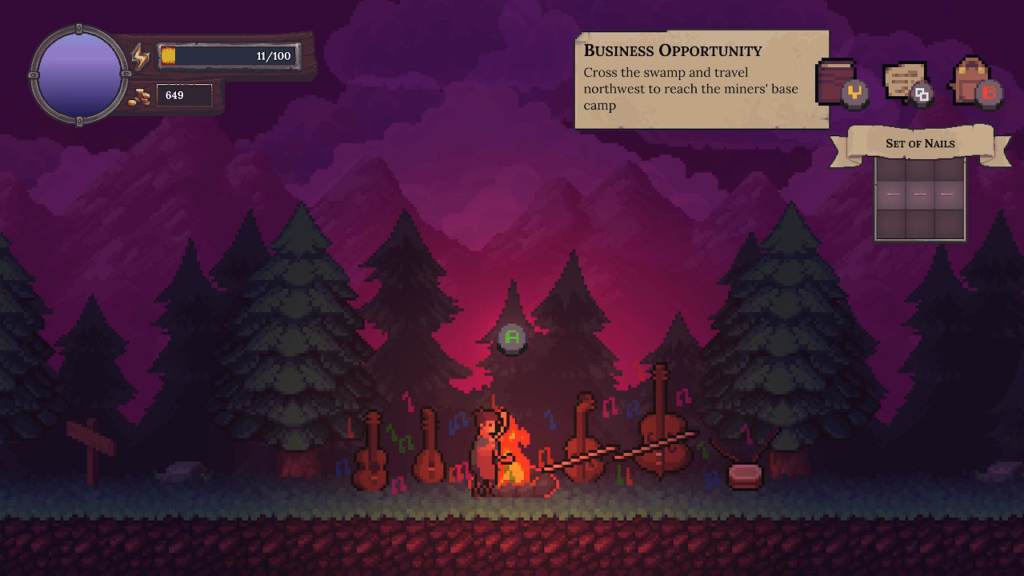
Also interesting is While The Iron’s Hot has a firm commitment to non-violence. Despite the dozens of deadly weapons and impenetrable armors the Blacksmith creates for the people of Ellian during his quest, he never engages in combat himself.
Exploring caves and abandoned buildings plays like an old cinematic adventure game, in the vein of Prince of Persia or Flashback. The Blacksmith can climb up and down marked ledges and perform limited jumps across short gaps, but to call these sequences “platforming” would be a misnomer. The Blacksmith lacks the speed, precision, and freedom of movement needed for platforming. These moments exist to allow the Blacksmith to gather crafting materials and puzzle pieces and deliver them to their destinations, not to provide satisfying or challenging obstacles to be overcome with skill and tenacity.
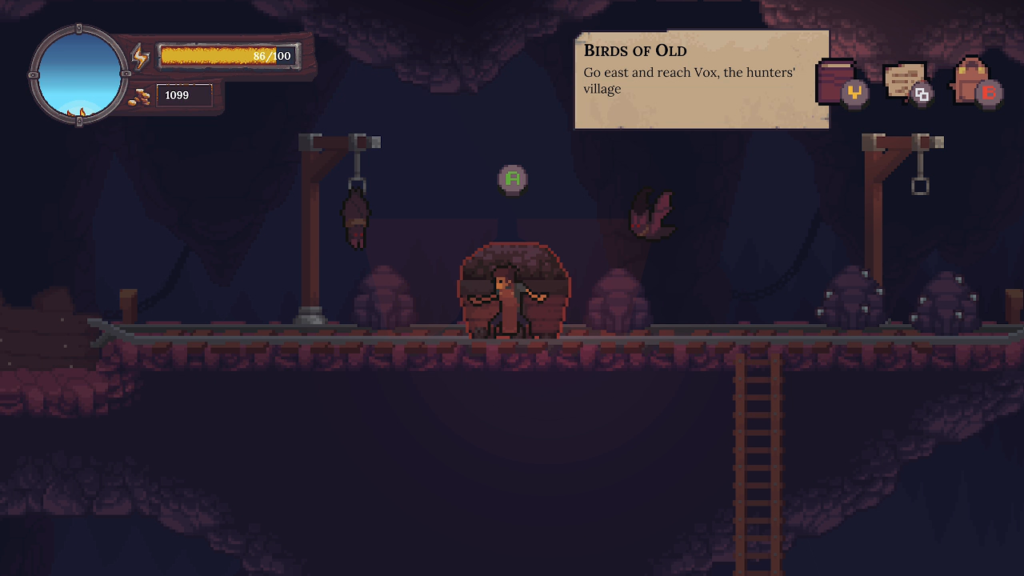
Monsters and hostile humans wander a few of Ellian’s darker corners. They are not dangerous. In a few caves, the Blacksmith encounters bats and grosser nasties who have cones of light in front of their faces representing their vision. At first I seek to keep the Blacksmith hidden from these cones by placing him behind boulders and minecarts. I soon stop because there seems to be no discernible penalty for letting the monsters see him. If there is one, the Blacksmith can easily outrun it.
The other main activity in While The Iron’s Hot is improving the blacksmith artisan town of Stal. When the Blacksmith arrives on Ellian, Stal is a ghost town with only two standing buildings. By completing quests around the world map, the Blacksmith adds new residents to Stal, each of whom want a new building constructed for their use. This, of course, requires smithing lots of new materials. As the Blacksmith adds new buildings and upgrades them, Stal transforms from a few shacks in an overgrown clearing to a fortress, the backdrop teeming with townsfolk wandering the stone roads.
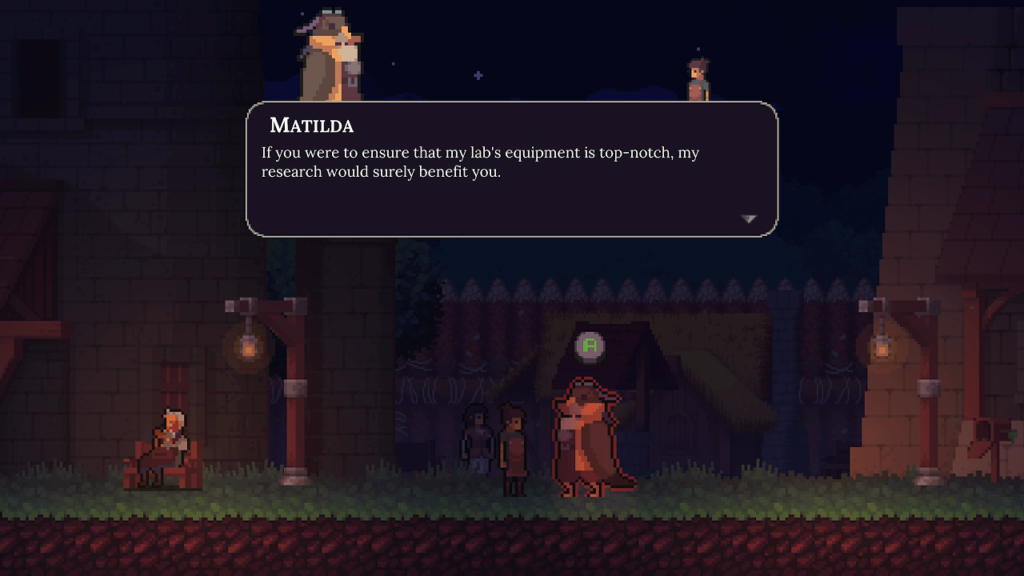
The new residents add new functions to Stal, like a friendly dwarf who will gather ore and other materials for the Blacksmith and a lighthouse keeper who improves the Blacksmith’s vision on the world map. The most significant addition is an Adventurer’s Guild who will send heroes out to complete quests. If these heroes are successful, they bring gold coins and experience points back to Stal for the Blacksmith to use to improve the town. The Blacksmith can craft and outfit heroes with higher quality weapons and armor to improve their chances at success.
The Adventurer’s Guild is a nice idea for generating passive income in Stal, but it comes so late in the story there is not much time left for its heroes to complete more than a handful of quests. The feature needs to be introduced much earlier to be of any use to the Blacksmith at all.
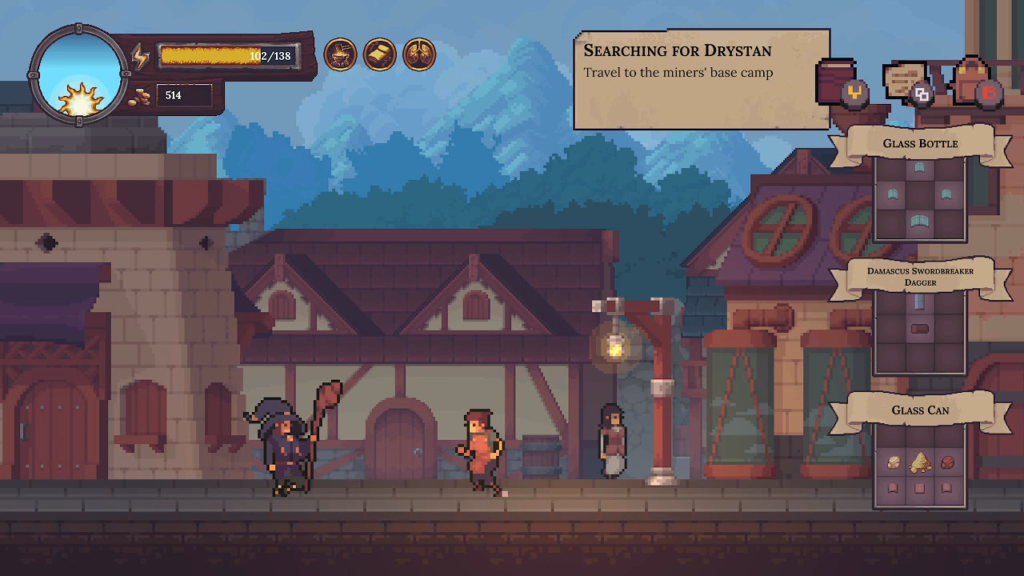
Gold coins are, for the most part, easy to ignore. Each artisan town has a merchant who will sell crafting materials to the Blacksmith, but most of these items can either be smithed or scavenged from areas near the town. There is no reason to waste money on them.
Money is better saved for improving Stal. In addition to new smithed parts, each building costs a large pile of gold coins to complete or upgrade. At a few key points, the entire narrative comes to a halt when the Blacksmith is mandated to upgrade the town to a certain level before the story will continue. Getting the money for these mandatory upgrades is the most fractious obstacle.
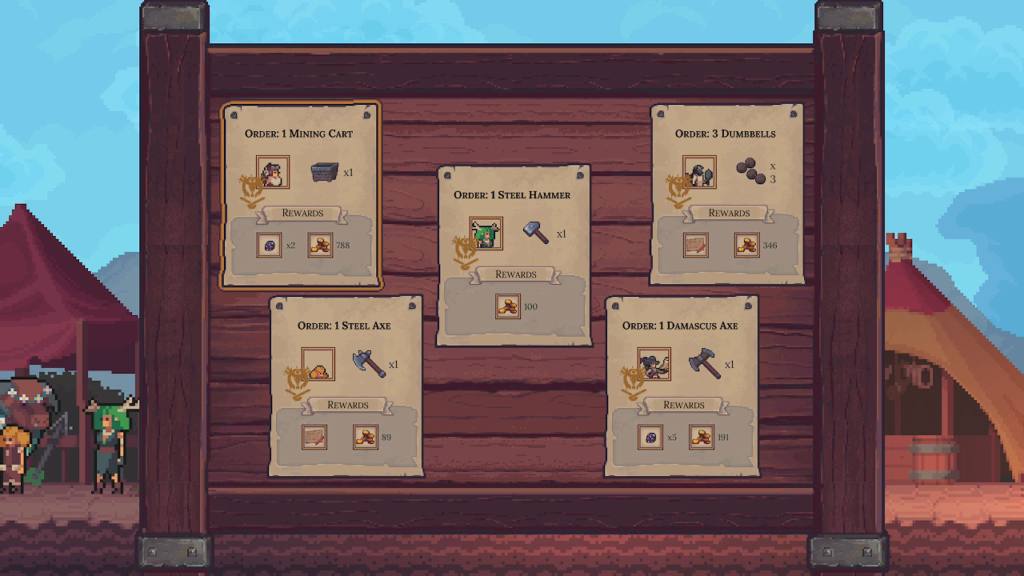
The Blacksmith collects a small amount of money by completing quests, exploring the world map, and fostering the Adventurer’s Guild. Most of their income comes from completing requests. Each artisan town has a job board where the local community will post items they need crafted. To earn enough money for Stal’s expensive upgrades, the Blacksmith must periodically accept dozens of these jobs.
There’s a frustrating sensation of standing still during these moments. The Blacksmith pops into a town, accepts every job on the board, then crafts the requested items at their portable studio. Repeat and repeat and repeat until they have the several thousand gold needed for the current building. It’s satisfying watching Stal grow from ghost town to bustling fortress, but it’s only achievable by adding a money grind on top of the resource grind that already drags the pacing to a crawl.
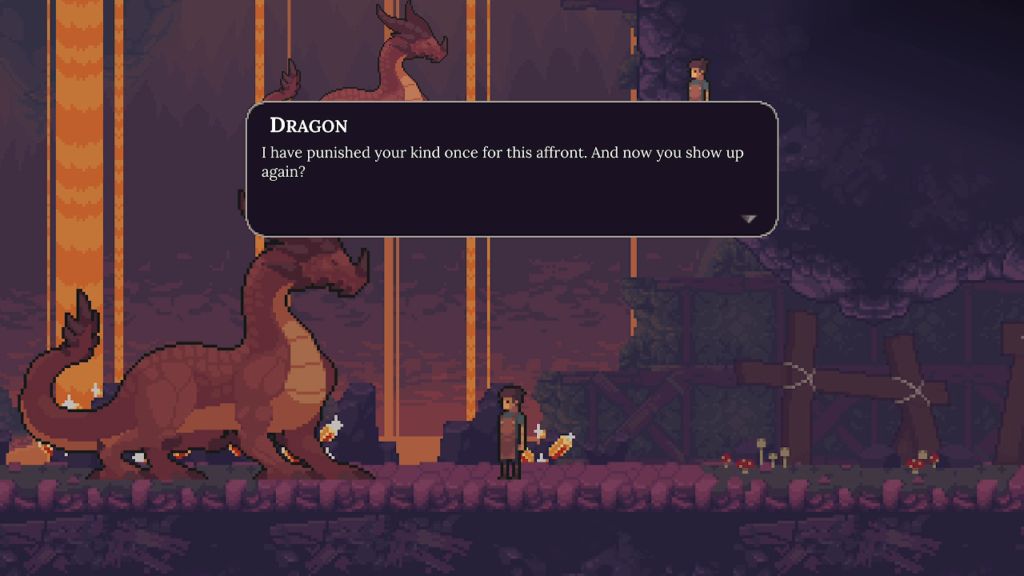
While The Iron’s Hot has an interesting premise and setting but too much of my time with it is spent grinding towards its arbitrary goals. Too much time is spent smelting ore. Too much time is spent hammering that ore into the same six parts. Too much time is spent grinding money. It took me fifteen hours to complete the main storyline, thoroughly explore the map, and get most of the upgrades in Stal. If I took out all the time spent repetitively smelting ore and crafting the same six parts, While The Iron’s Hot would be less than a five hour game. Sometimes there’s satisfaction to be found from a repetitive task performed thoroughly and well. I feel none of that satisfaction here.